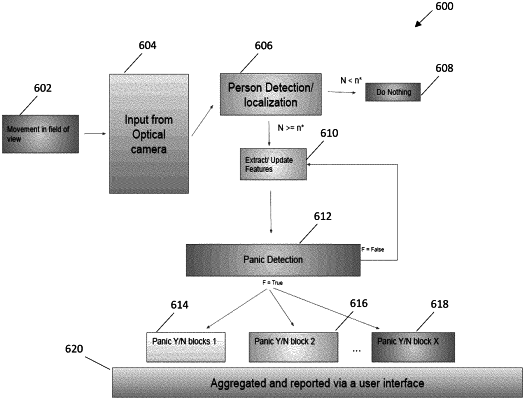| CPC G06V 20/53 (2022.01) [G06V 20/41 (2022.01); G06V 40/103 (2022.01); G06V 40/20 (2022.01); H04N 7/183 (2013.01)] | 17 Claims |

|
1. A threat detection system for mitigating crowd panic detection, comprising:
a camera to capture video images;
a computer processor to process the video images;
a software module to analyze frames of the video images to detect people's movement; and
a notification module to send a notification;
wherein the software module determines whether number of people in the frame of the video image exceeds a threshold number to proceed with further extraction of the frame image;
wherein the software module analyzes recent history of video images with people to identify abnormal movement;
wherein the software module creates a baseline and continually analyzes the frames of video images to the baseline and determines whether people's movement in the scene exceeds a threshold to determine a crowd panic scenario;
wherein the software module identifies people with cluster of red pixels indicating that these areas have motion from people which is perceived to be moving faster or in a different direction relative to a baseline, indicating erratic behaviour;
wherein the baseline is taken from recent history of people's movement within the video images representing a scene;
wherein if the features of the scene changes dramatically based on the perceived movement of the people in the scene and meet or exceed the threshold features for movement in enough consecutive frames, the system determines that there is panic in the scene;
wherein once a panic in the scene is assessed, the processor is further configured to execute one or more overlapping rule and quadrant rule to determine a scene from “abnormal” to “normal”.
|